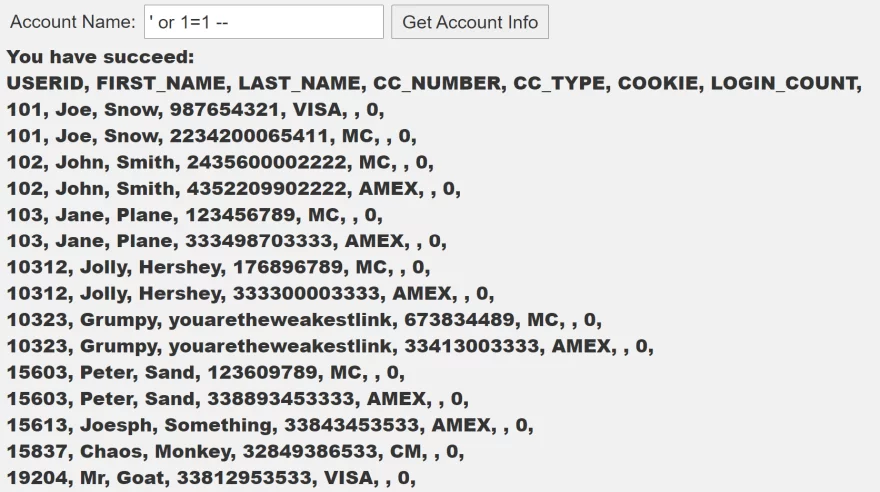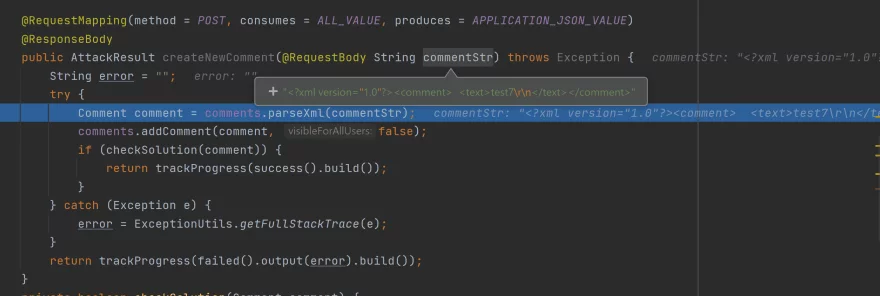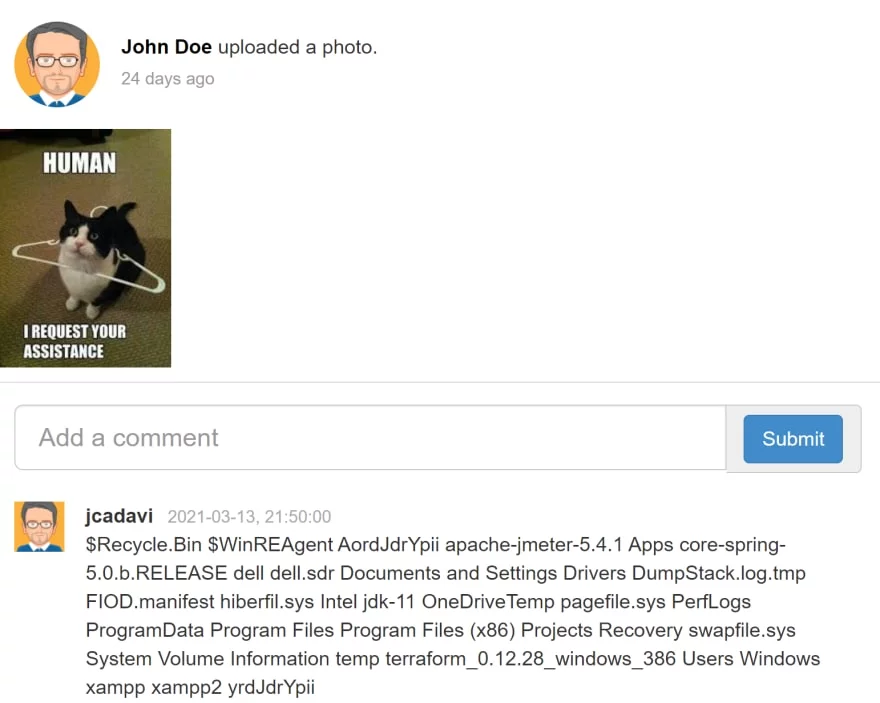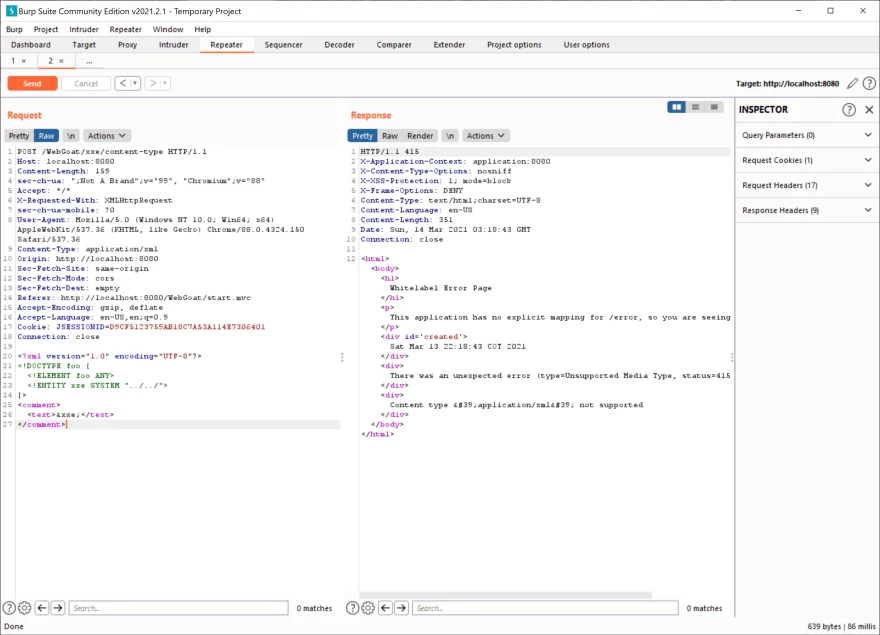Handling Injection Attacks in Java
An injection attack is the insertion of malicious data from the client to the application using SQL or XXE (XML External Entity).
It is important to prevent injection attacks because it allows attackers to spoof identity, tamper with existing data, disclosure all the data, destroy the data, become the administrator, etc.
SQL Injection
If the attacker introduces something like ‘ or 1=1 — the application could display data from the database:
A patch to the SQL injection
The flaw is because the field (accountName) is concatenated to the SQL statement:
1 2 3 4 5 | String query = "SELECT * FROM user_data WHERE last_name = '" + accountName + "'";Statement statement = connection.createStatement(ResultSet.TYPE_SCROLL_INSENSITIVE, ResultSet.CONCUR_READ_ONLY);ResultSet results = statement.executeQuery(query); |
To patch this flaw you must use Immutable Queries, Static Queries, Parameterized Queries, or Stored Procedures. For the previous example the best solution is a parameterized query:
01 02 03 04 05 06 07 08 09 10 11 12 | final String query = "SELECT * FROM user_data WHERE last_name = ?";try { PreparedStatement statement = connection.prepareStatement(query, ResultSet.TYPE_SCROLL_INSENSITIVE, ResultSet.CONCUR_READ_ONLY); statement.setString(1, accountName); ResultSet results = statement.executeQuery(query); ...} catch (SQLException sqle) { ...} |
Now, if you try to inject SQL you get an exception.
XXE Injection
If you have a service that receives an XML, somebody could change that XML (using Burp Suite) in order to access local resources, execute code remotely, disclose files, or execute a DoS attack (using a Billion laughs attack).
You may say “no worries, I use JSON in my REST services”. However, the attacker could change the content type of the request body and send the same XML. For instance, next we have the request of a service caught by Burp Suite (ellipsis is used to omit irrelevant information):
1 2 3 4 5 | ...Content-Type: application/json...{"text":"test"} |
It is as easy as to change the Content-Type to XML and the payload to perform the attack:
01 02 03 04 05 06 07 08 09 10 11 12 | ...Content-Type: application/xml...<?xml version="1.0" encoding="UTF-8"?><!DOCTYPE foo [ <!ELEMENT foo ANY> <!ENTITY xxe SYSTEM "../../">]><comment> <text>&xxe;</text></comment> |
This service is used to post a comment, but now we have posted a directory of the server:
After some tries, you could print the content of an important file (like passwords or configurations).
A patch to the XXE injection
You can validate the input, the content type, or instruct your parser to ignore DTD (document type definition). See the setProperty invocation:
01 02 03 04 05 06 07 08 09 10 11 | protected Comment parseXml(String xml) throws Exception { JAXBContext jc = JAXBContext.newInstance(Comment.class); XMLInputFactory xif = XMLInputFactory.newFactory(); xif.setProperty(XMLInputFactory.SUPPORT_DTD, false); XMLStreamReader xsr = xif.createXMLStreamReader(new StringReader(XML)); Unmarshaller unmarshaller = jc.createUnmarshaller(); return (Comment) unmarshaller.unmarshal(xsr);} |
For Spring REST Services, you can specify the consumes = MediaType.APPLICATION_JSON_VALUE
1 2 3 4 5 | @RequestMapping(method = RequestMethod.POST, consumes = MediaType.APPLICATION_JSON_VALUE, produces = MediaType.APPLICATION_JSON_VALUE)@ResponseBodypublic AttackResult createNewUser(@RequestBody String commentStr, @RequestHeader("Content-Type") String contentType) throws Exception { ...} |
Now, the attacker cannot send XML:
For more information see: https://cheatsheetseries.owasp.org/cheatsheets/XML_External_Entity_Prevention_Cheat_Sheet.html
| Published on Java Code Geeks with permission by Eidher Julian, partner at our JCG program. See the original article here: Handling Injection Attacks in Java Opinions expressed by Java Code Geeks contributors are their own. |







Good article